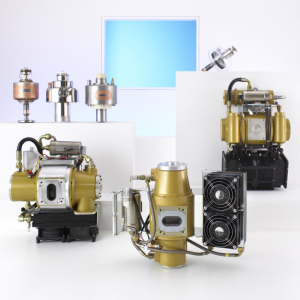by
Barbara Kram, Editor | March 30, 2009

Various CT Tubes
offered by Dunlee
This report originally appeared in the January 2009 issue of DOTmed Business News. Also read our CT industry sector report in the April 2009 issue.
The jury is still out as to the impact of the global economic downturn and U.S. presidential transition on the health care industry. But it's easy to predict that companies that can save on health care costs are well positioned. Business models designed to maximize equipment life and help manage life cycle expenses stand to benefit. This all suggests a favorable outlook for companies that make or install X-ray tubes. What's more, capital expenditures on new medical equipment are being delayed, putting the focus on parts and service for both CT and radiographic X-ray applications.
"There's always a 'replace versus repair' equation and when times are tough the needle moves a little further over to the repair side," says David Hurlock, International Marketing Manager, Varian Medical Systems, Interay. "As the upgrades are delayed, it gives us a longer market opportunity to replace tubes on the older products." Varian manufactures X-ray tubes for the full range of CT and radiographic uses for both OEM equipment and for replacement parts on installed machines.
"We sell at the wholesale level, not directly to hospitals," says Robert H. Kluge, President, X-Ray Products, Varian Medical Systems. "We sell either to OEMs who take our product and build it into a system, or we sell to service providers who take our X-ray tube and replace one on an existing piece of equipment."
Varian MCS 7078
CT X-ray tube
The world market for X-ray tubes is not especially large, about $750 million on a wholesale basis or topping $1.5 billion in terms of what providers pay. Since new tubes are bought and sold worldwide and re-imported, it's difficult to gauge the exact market size. Industry experts project that the market will grow in the mid-single digits in the next few years.
With the availability of quality replacement tubes, there is no doubt that hospitals can stretch their CT and radiographic investments. "The trend we are seeing is the health care provider using the tube until it is completely dead...so they are getting the most bang for the buck," says Jeff Rondeau, President, 5 Star Imaging, Inc.. "Our customers are doing a lot of preventive maintenance to make sure they are getting the life they need out of X-ray and CT equipment. Service companies are busy." This trend shifts business to companies that perform service and cost-effective upgrades. For example, some CT scanners have upgrade packages with larger tubes and new software. "The hospitals may do that for the next year or so to generate revenue and move forward until this economy picks up and they can buy a new scanner," Rondeau says.
